Abstract
Incorporation of [14C]-thymidine into mouse lymph node cells stimulated with either Con-canavalin A or lipopolysaccharide in serum-free medium was markedly enhanced by the addition of transferrin. Thymidine incorporation was similar in transferrin-containing serum-free medium and in medium containing 5% foetal calf serum. Transferrins from both homologous and heterologous species were equally effective, but iron-binding half-molecules of transferrin, and low molecular weight iron chelates produced no enhancement. The optimal response was obtained with 10--50 micrograms/ml of transferrin, and with 30%--70% iron saturation. Although the major function of transferrin in lymphocyte cultures is probably to supply iron, it may also fulfil other functions.
Full text
PDF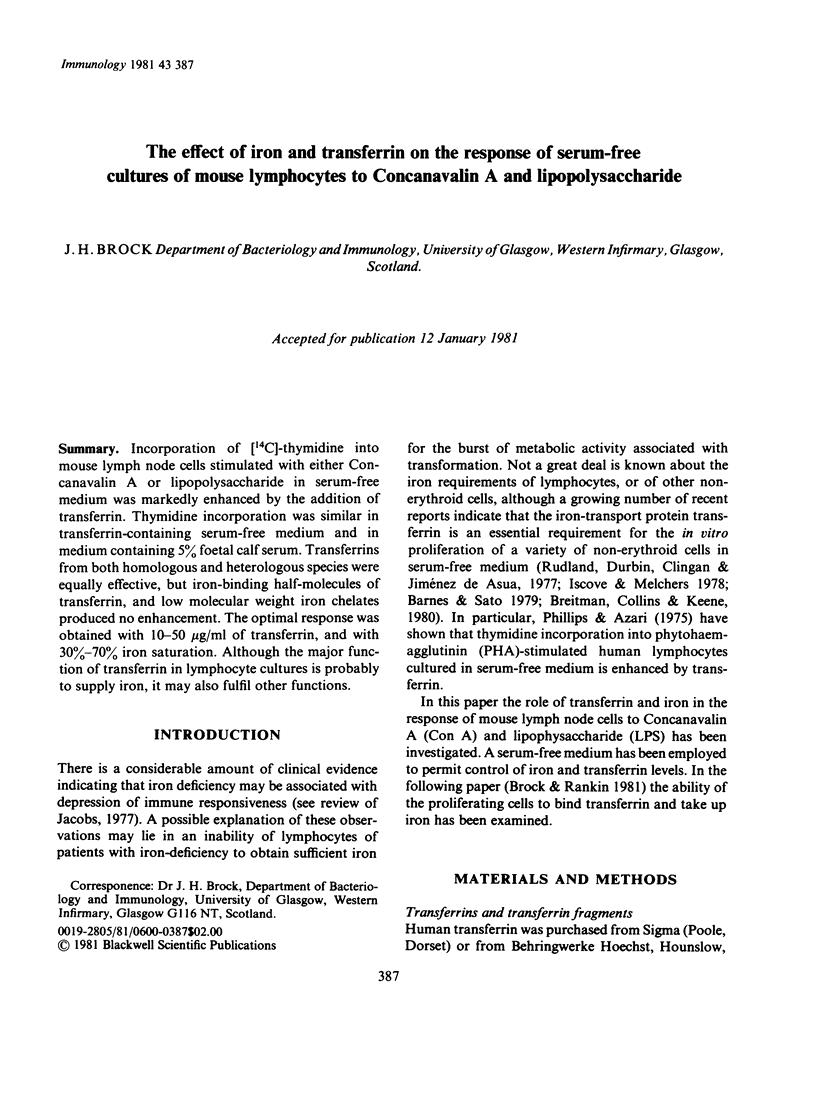
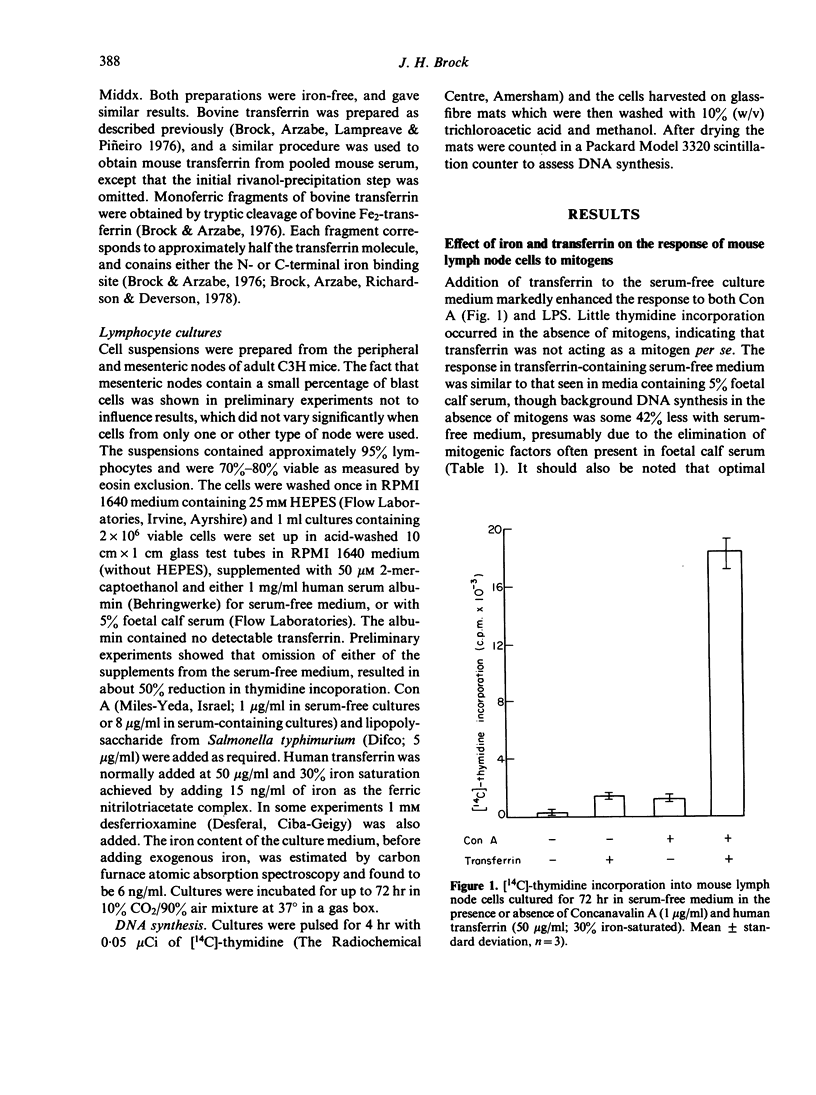
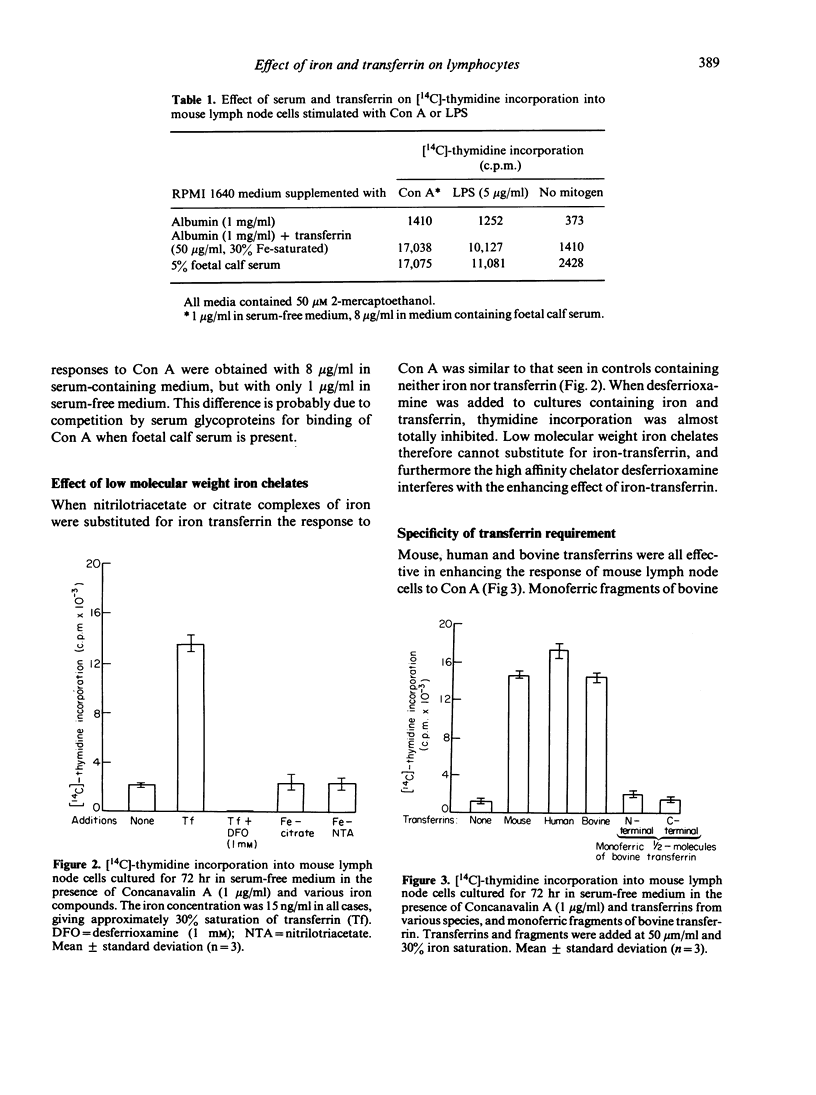
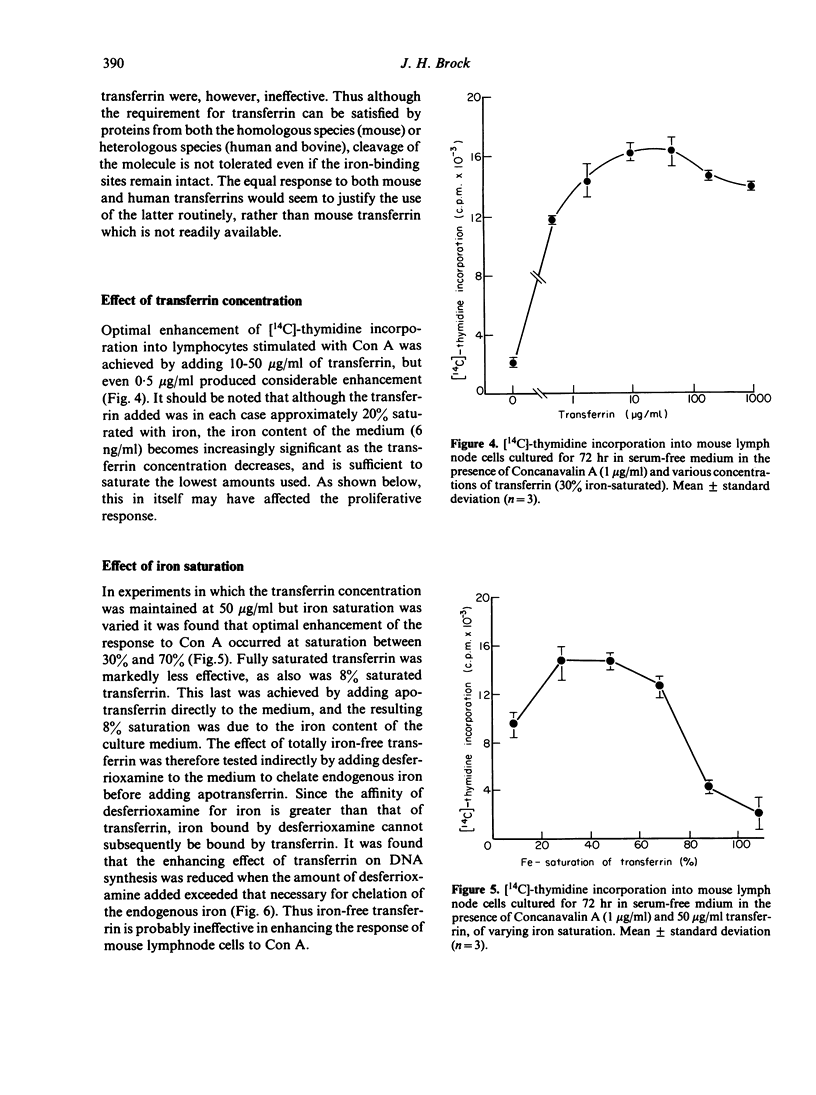
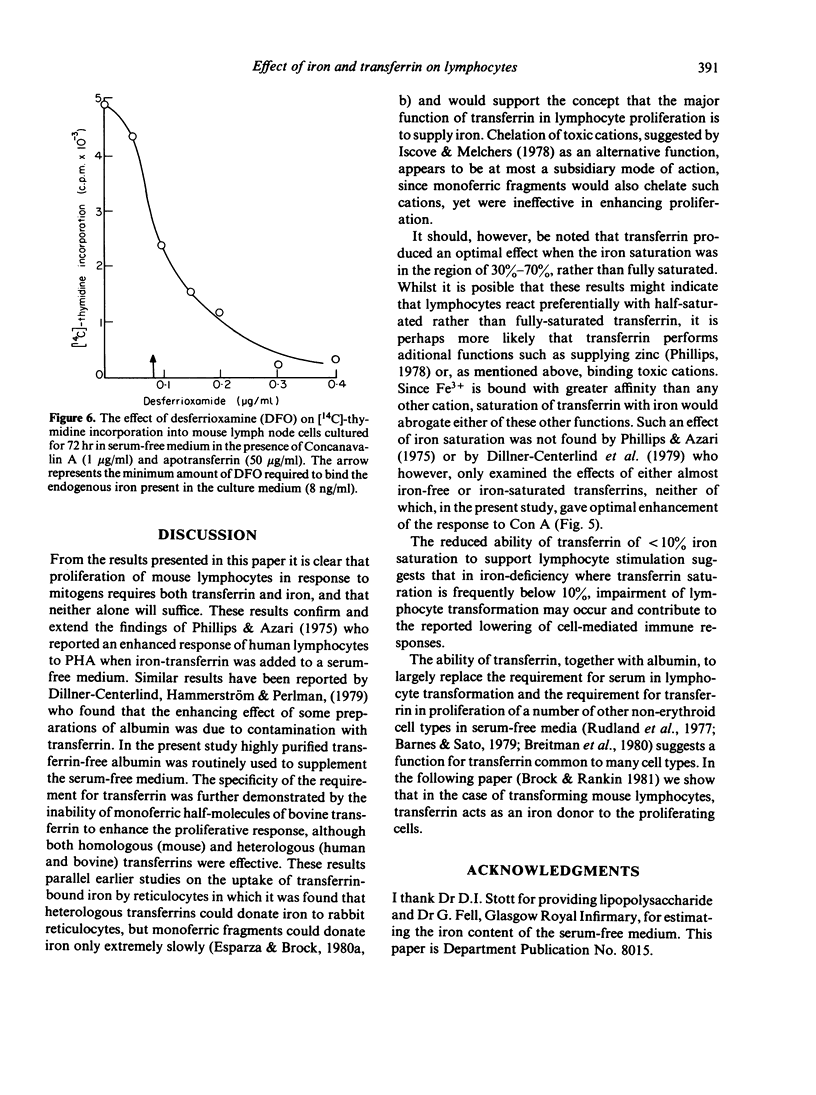
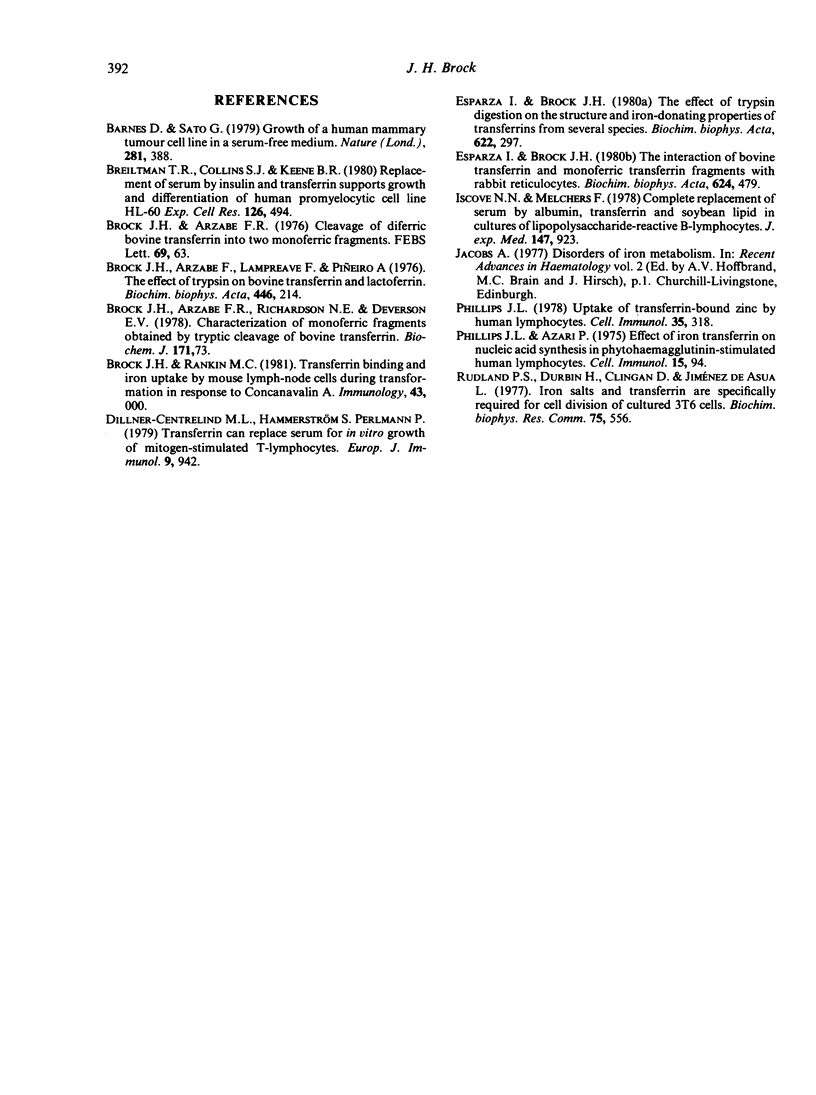
Selected References
These references are in PubMed. This may not be the complete list of references from this article.
- Barnes D., Sato G. Growth of a human mammary tumour cell line in a serum-free medium. Nature. 1979 Oct 4;281(5730):388–389. doi: 10.1038/281388a0. [DOI] [PubMed] [Google Scholar]
- Breitman T. R., Collins S. J., Keene B. R. Replacement of serum by insulin and transferrin supports growth and differentiation of the human promyelocytic cell line, HL-60. Exp Cell Res. 1980 Apr;126(2):494–498. doi: 10.1016/0014-4827(80)90296-7. [DOI] [PubMed] [Google Scholar]
- Brock J. H., Arzabe F. R. Cleavage of differic bovine transferrin into two monoferric fragments. FEBS Lett. 1976 Oct 15;69(1):63–66. doi: 10.1016/0014-5793(76)80654-0. [DOI] [PubMed] [Google Scholar]
- Brock J. H., Arzabe F., Lampreave F., Piñeiro A. The effect of trypsin on bovine transferrin and lactoferrin. Biochim Biophys Acta. 1976 Sep 28;446(1):214–225. doi: 10.1016/0005-2795(76)90112-4. [DOI] [PubMed] [Google Scholar]
- Dillner-Centerlind M. L., Hammarström S., Perlmann P. Transferrin can replace serum for in vitro growth of mitogen-stimulated T lymphocytes. Eur J Immunol. 1979 Dec;9(12):942–948. doi: 10.1002/eji.1830091207. [DOI] [PubMed] [Google Scholar]
- Esparza I., Brock J. H. The effect of trypsin digestion on the structure and iron-donating properties of transferrins from several species. Biochim Biophys Acta. 1980 Apr 25;622(2):297–307. doi: 10.1016/0005-2795(80)90040-9. [DOI] [PubMed] [Google Scholar]
- Esparza I., Brock J. H. The interaction of bovine transferrin and monoferric transferrin fragments with rabbit reticulocytes. Biochim Biophys Acta. 1980 Aug 21;624(2):479–489. doi: 10.1016/0005-2795(80)90089-6. [DOI] [PubMed] [Google Scholar]
- Iscove N. N., Melchers F. Complete replacement of serum by albumin, transferrin, and soybean lipid in cultures of lipopolysaccharide-reactive B lymphocytes. J Exp Med. 1978 Mar 1;147(3):923–933. doi: 10.1084/jem.147.3.923. [DOI] [PMC free article] [PubMed] [Google Scholar]
- Phillips J. L., Azari P. Effect of iron transferrin on nucleic acid synthesis in phytohemagglutinin-stimulated human lymphocytes. Cell Immunol. 1975 Jan;15(1):94–99. doi: 10.1016/0008-8749(75)90167-7. [DOI] [PubMed] [Google Scholar]
- Phillips J. L. Uptake of transferrin-bound zinc by human lymphocytes. Cell Immunol. 1978 Feb;35(2):318–329. doi: 10.1016/0008-8749(78)90152-1. [DOI] [PubMed] [Google Scholar]
- Rudland P. S., Durbin H., Clingan D., de Asua L. J. Iron salts and transferrin are specifically required for cell division of cultured 3T6 cells. Biochem Biophys Res Commun. 1977 Apr 11;75(3):556–562. doi: 10.1016/0006-291x(77)91508-x. [DOI] [PubMed] [Google Scholar]


